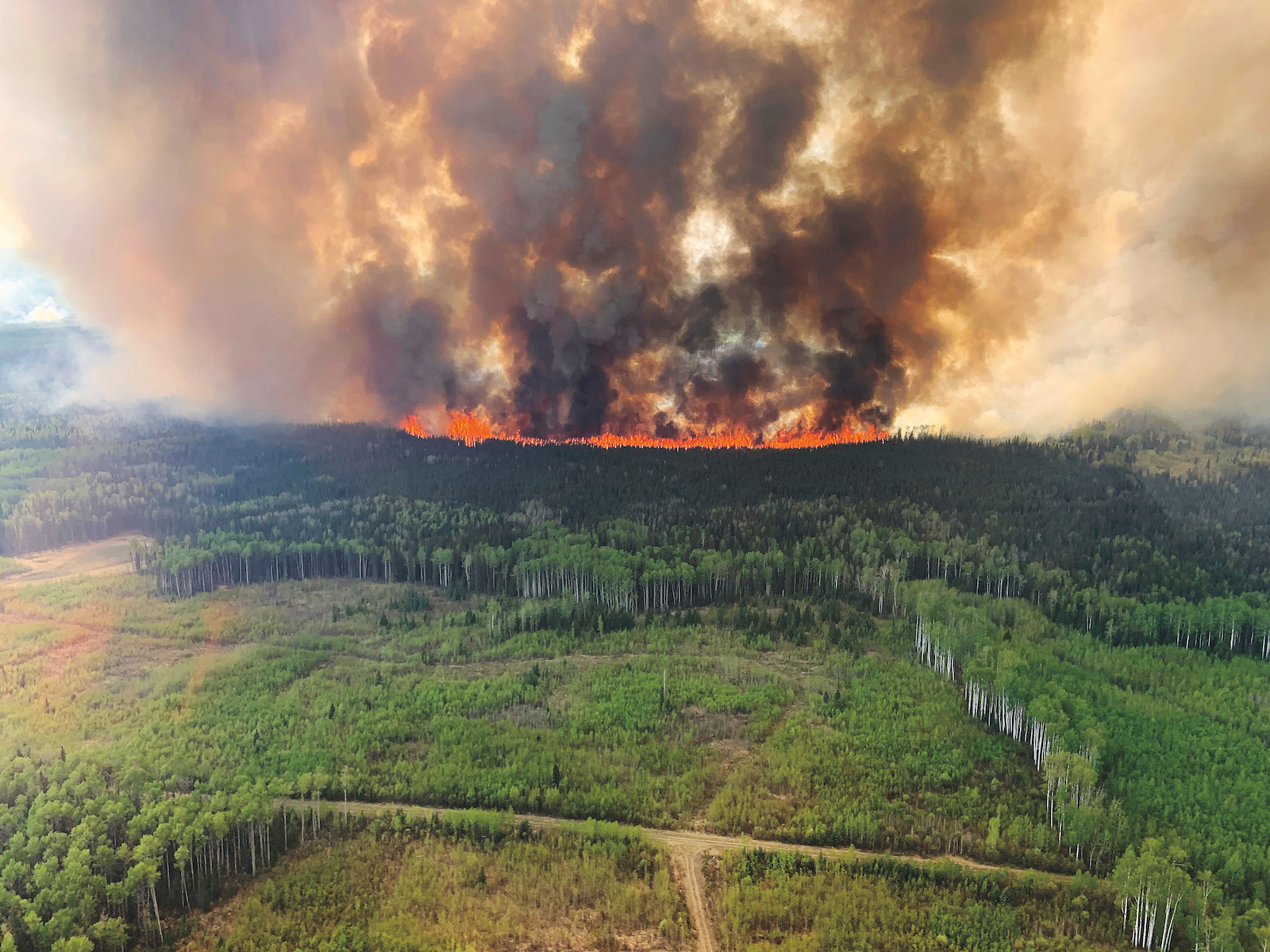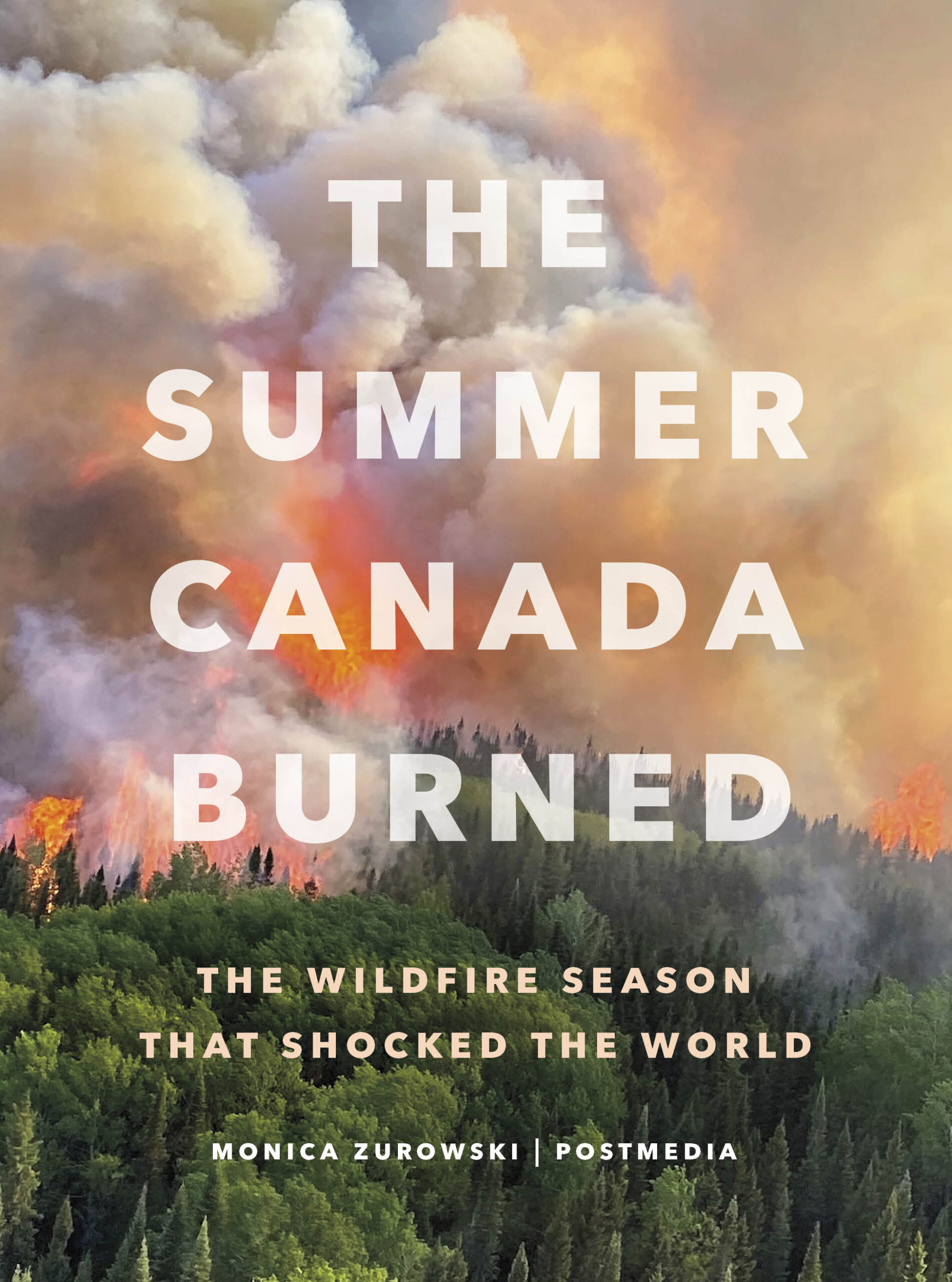By the end of August 2023, almost 6,000 wildfires had devoured more than 15 million hectares of Canadian forests. Even areas unaffected by fire lay blanketed in smoke for days. The new book The Summer Canada Burned: The Wildfire Season That Shocked the World—edited by the Calgary Herald’s Monica Zurowski and excerpted here—collects writing and photographs from Postmedia journalists across the country who captured the front lines of Canada in flames.
As the 2023 wildfire season started in Canada, clouds of concern appeared on the horizon. Clouds laden with hoped-for rainfall, however, didn’t. One word described the spring weather across the country: dry.
A walk through the forest in many of Canada’s provinces and territories revealed a problematic picture. Carpets of fallen pine needles crunched underfoot. Leaves of deciduous trees curled toward the sun. Spring runoff slowly trickled through streams and brooks. A drought cursed much of the country.
April showers had been sparse in the Maritimes, with most areas receiving only 20 to 50 percent of their usual precipitation for the month. In Ontario, the mercury rose to an unseasonably hot 30°C (86°F) in a mid-April heat wave, which oddly occurred about 8 days after an ice storm plagued the area.
After that storm, Quebec and Ontario experienced abnormally dry springs. The same label was applied to much of the Prairies, with swaths of drought—ranging from moderate to severe—hitting various parts of Manitoba, Saskatchewan, and Alberta. Arid weather also afflicted many parts of British Columbia and Northern Canada.
Conditions were ripe for a wave of wildfires. Firefighters and forestry officials began preparing the best they could. Several provinces held news conferences, discussing the work they did to prepare for the wildfire season. Wildland firefighters were trained; supported tankers would be available; and specialized equipment was ready to go. But would it be enough to protect parched forests and prairie land?

The Bald Mountain Wildfire is shown in the Grande Prairie forest area on May 12, 2023. Photo courtesy of Alberta Wildfire.
“As a result of drought conditions, the BC Wildfire Service is observing more advanced fire behaviour than what is typical at this time of year,” Bruce Ralston, Minister of Forests, warned in April. Meanwhile, the Alberta government said, “While it is too early to predict what the 2023 wildfire season will look like, spring rainfall will have a significant impact on what can be expected.”
That rain never fell.
By the middle of May, Canadians felt like it was the middle of summer. Heat waves rolled across the country. Precipitation was scarce.
“We’ve had extended periods of long, drying days, making us feel like we’re in August or July,” explained B.C. fire behaviour specialist Ben Boghean. “We had some of the hottest May days we’ve had on record. We haven’t had the moisture, and that’s over-layered on a very dry winter, which is compounded even more by the fact we had extreme drought in the fall.” Late fall fires that scorched the earth well into October and November the previous year, along with lower-than-average snowfalls, exacerbated the conditions.
Flames began to flicker.
On May 4, the Alberta government put out its first wildfire update of the year—fires were spreading. Coincidentally, it was also International Firefighters’ Day—a time when people are encouraged to honour the sacrifices that firefighters make to keep communities safe. Few expected those sacrifices to be as heavy as they became in Canada in 2023.
“Every day, firefighters suit up and protect our homes, businesses, communities, and our forests,” Mike Farnworth, B.C.’s Minister of Public Safety and Solicitor General, said at the time. “This work is dangerous. They put their own safety—and sometimes lives—on the line to protect the safety of countless others.” No one knew how true those words would ring as the fire season began.

Firefighters with the Fort McMurray Fire Department conduct a controlled burn near Highway 63 on April 27, 2023. The controlled burns are part of the FireSmart program, which is designed to fight and prevent fires in the region. Photo by Vincent McDermott courtesy of Fort McMurray Today, Postmedia Network.
In Alberta, 44 new wildfires started that day alone, meaning 72 active fires were now consuming trees, fields, and anything else standing in the way. Within 24 hours, the number of active fires rose to 92, with one-third raging out of control.
The evacuations began.
More than 13 ,000 Albertans were ordered to leave their homes as flames approached and in some cases invaded towns and First Nations communities. The mandate to evacuees was simple: Gather family, valuable documents, medication, pets, and go.
The exponential growth of fires demonstrated how “extremely fluid” the wildfire situation was, said Stephen Lacroix, director of the Alberta Emergency Management Agency. “This is a stark reminder of just how unpredictable and powerful wildfire can be.”
Adapted with permission of the publisher from the book The Summer Canada Burned: The Wildfire Season That Shocked the World, edited by Monica Zurowski and published by Greystone Books in partnership with Postmedia in November 2023. Available wherever books are sold. Read more stories about climate change.









